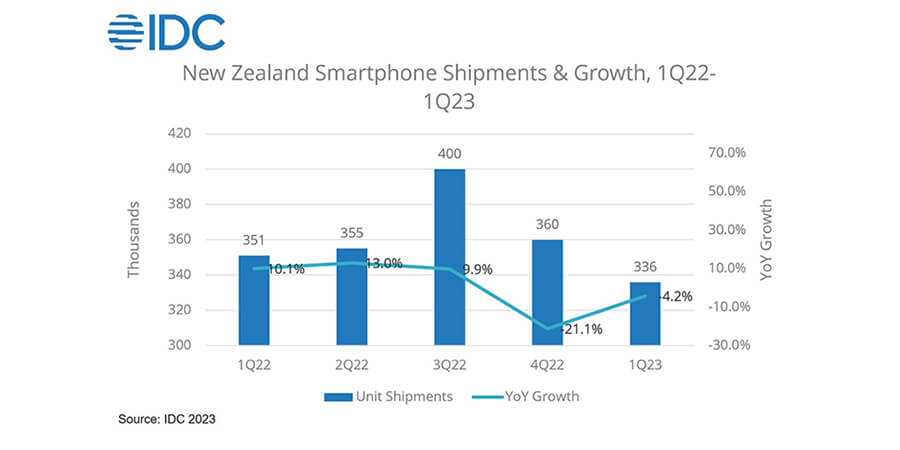The smartphone market in New Zealand experienced a 4.2% year-on-year decline in the first quarter of 2023, according to the International Data Corporation's (IDC) Worldwide Quarterly Mobile Phone Tracker. With only 336,000 units shipping during this period, the market struggled to overcome customer concern generated by the forthcoming budget and general elections in 2023.
Various reasons led to the quarter's lackluster consumer demand. Concerns about a possible recession, high inflation, and rising interest rates have left people uneasy. Furthermore, growing living costs, such as higher prices for rent, food, and transportation, constrained available income for discretionary expenditures such as household products and technology.
As a result, there was an excess of inventory in the smartphone market, causing sellers to engage in unloading and adjustment procedures. Vendors consolidated their device offerings while launching enhanced model variants to entice users and increase demand.
"The start of 2023 was as expected, with price and budget on the minds of consumers when purchasing electronics," said Zachary Candy, lead analyst, Mobile Phones Research at IDC New Zealand. "A shift was seen towards more premium devices in 1Q23, with large shipments of Apple’s iPhone 14 series and the recently launched Samsung Galaxy S23 series models helping to maintain a high average selling price (ASP) for the New Zealand smartphone market.”
Despite the overall decline, vendors remain cautiously optimistic since new gadgets and high-ASP premium versions aided the market's growth. The vendor share remained largely stable compared to previous quarters. Following seasonal trends, Samsung reclaimed the top spot, while TCL ousted HMD to take fifth place. OPPO and 'One New Zealand,' formerly known as Vodafone New Zealand, both retained their positions while increasing their market shares compared to the same period the previous year. These businesses performed particularly well in the low- and mid-priced niches.
The Samsung Galaxy S23 Series experienced extraordinary popularity in the premium segment, aided by substantial trade-in values granted by mobile phone carriers. Customers also received further savings when they signed up for 24- or 36-month interest-free contracts. Apple's iPhone 14 series remained a popular choice among customers. Surprisingly, a new entrant in the market, the 'OPPO Find N2 Flip,' surpassed expectations, providing variety and competition to the foldable phone segment.
Market observers will closely track how economic conditions and forthcoming events affect consumer mood and the entire smartphone market in New Zealand as the year develops.
